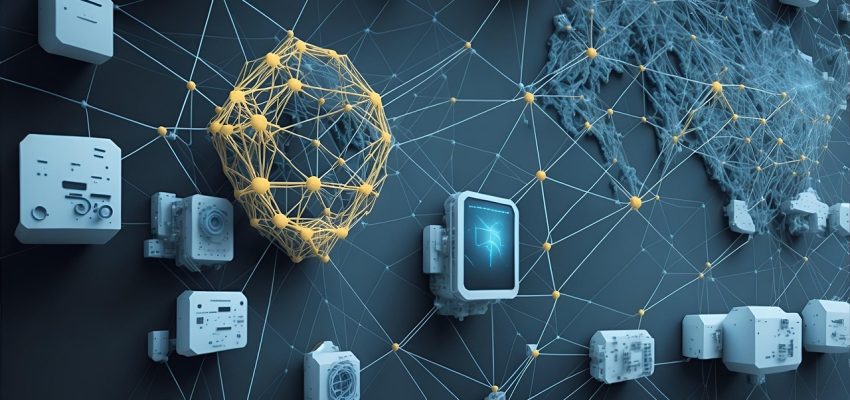
The Internet of Things (IoT) refers to a network of interconnected physical devices that collect and exchange data using embedded sensors, software, and communication technologies. Oh yeah, these smart devices range from the normal stuff like fridges and fitness trackers to the really cool machines in big factories too.
By mixing the everyday world with the digital world, IoT is completely redefining how we live as well as how we conduct our work. Perhaps most importantly, it is also changing the way we harmonize with things around us and connect with and relate to our setting.
How IoT Works
IoT operates through four main components: Devices, connectivity, data processing, and user interaction. So, let’s see how it works:
- Devices/Sensors: These are the tangible things that soak up data about what’s around them. Sensors could track temperature, motion, light, pressure, or other environmental factors.
- Connectivity: Devices are all connected via different kinds of communication methods to pick up information and share it or up to the cloud or other nearby technology through Wi-Fi, Bluetooth, Zigbee, mobile networks, or this thing called LPWAN, which stands for Low Power Wide Area Networks.
- Data Processing: Once the data reaches the cloud, software processes it. This step involves analyzing and filtering data to derive meaningful insights, often using artificial intelligence or machine learning.
- User Interface: The last step is also where folks get to interact with the system directly for real too. For example, a homeowner can adjust their smart thermostat using a mobile app, or a factory manager might receive alerts when a machine requires maintenance.
Real-World Applications of IoT
The potential of IoT spans numerous industries and sectors:
- Smart Homes: IoT enables homeowners to control lights, appliances, security systems, and thermostats remotely, enhancing convenience and energy efficiency.
- Healthcare: Wearable IoT devices like fitness trackers and smartwatches monitor vital signs, while remote monitoring tools help doctors track patient health in real-time.
- Agriculture: Farmers use IoT-based sensors to monitor soil moisture, crop health, and weather conditions to improve productivity and sustainability.
- Industrial Automation: In manufacturing, Internet of Things (IoT) technology lets us foresee problems before they happen, track performance all the time and automate lots of the drilling work that can be smart.
- Smart Cities: IoT powers traffic management systems, waste collection, energy usage monitoring, and public safety improvements in urban environments.
Benefits of IoT
- Efficiency: Automation means doing things fast and doing them right.
- Cost Savings: Predictive maintenance and optimized processes help reduce unnecessary expenses.
- Improved Decision Making: Real-time data insights lead to better strategic decisions.
- Enhanced Convenience: Smart gadgets make life a breeze for grandmas and grandpas who don’t feel left behind at home, just like busy mamas and daddies brew up some efficiency in the workplace or on the office desk.
Challenges of IoT
Despite its benefits, IoT comes with several challenges:
- Security and Privacy: The more devices connected to the internet, the higher the risk of cyberattacks and data breaches.
- Interoperability: Devices from different manufacturers may not communicate seamlessly.
Scalability and Infrastructure: Taking care of lots and lots of different gadgets really means having really powerful base systems and networking infrastructure so that everything flows smoothly and everyone stays happy.


